There’s a spring-fed dam down the bottom of one of our paddocks which used to have plenty of water, and a few bulrushes. After what I’ve dubbed the “eight month summer” from October 2012 to May 2013 (i.e. eight months of below average rainfall), most of the water in the dam was gone, and there were rather more bulrushes. Flash forward to the end of last summer (approximately February 2015), and we had all the bulrushes and no bloody water.
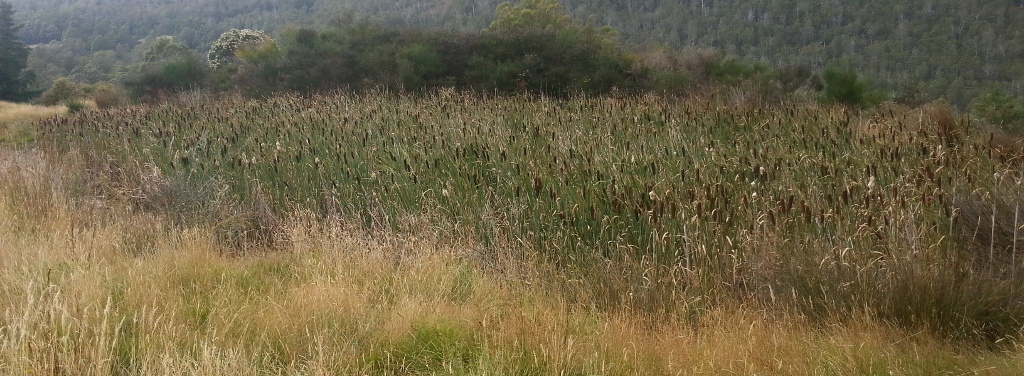 We figured either the dam was leaking, or the bulrushes were drinking up the water. Seeing as there wasn’t any water in the dam, I though it’d be an ideal time to pull the bulrushes out; relatively easy access, and once we get some more rain through winter, we’ll be able to figure out what the dam is doing one way or another. Having pulled out a small patch of bulrushes over the course of ten minutes or so, I thought to myself: how hard could it be? (The astute observer will note that this is a weak form of the deadly old rhetorical “what could possibly go wrong?”)
We figured either the dam was leaking, or the bulrushes were drinking up the water. Seeing as there wasn’t any water in the dam, I though it’d be an ideal time to pull the bulrushes out; relatively easy access, and once we get some more rain through winter, we’ll be able to figure out what the dam is doing one way or another. Having pulled out a small patch of bulrushes over the course of ten minutes or so, I thought to myself: how hard could it be? (The astute observer will note that this is a weak form of the deadly old rhetorical “what could possibly go wrong?”)
For those who have never experienced bulrushes first hand, they are a reed up to a couple metres tall, with a stalk anywhere between 3-10cm at the base, and as far as I can tell, they grow in maddeningly sticky mud. Apparently parts of them are directly edible, you can use them to make flour, and I suspect you can even brew beer from the roots with some effort, but that’s a project for another time. Any individual bulrush is not too much of a pain to pull out of the ground, assuming some upper body and/or arm strength. So I decided to spend half an hour each morning pulling ’em out, and dropping them in place, so I could stand on the resultant reed mass to get to the ones in the middle of the dam where the ground becomes seriously boggy. Here’s a photo of the swathe I cut down the north side of the dam over the first day or two:
 It’s important to note that we don’t own any heavy machinery suitable for this task, so the entire job was done solo, by hand, in gumboots and gloves. After about a week, it was starting to look like an impressive impact (note – this photo is facing back the opposite direction from the previous photo):
It’s important to note that we don’t own any heavy machinery suitable for this task, so the entire job was done solo, by hand, in gumboots and gloves. After about a week, it was starting to look like an impressive impact (note – this photo is facing back the opposite direction from the previous photo):
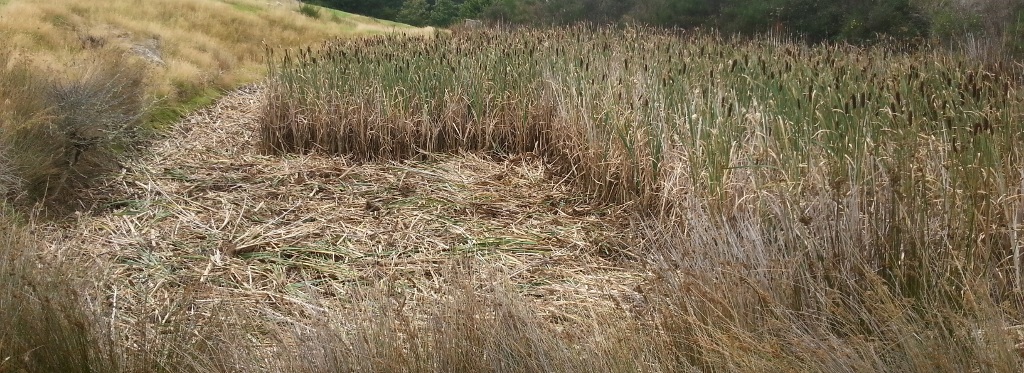 After two weeks I got bored with dropping flat areas, and decided to make a few paths to liven things up:
After two weeks I got bored with dropping flat areas, and decided to make a few paths to liven things up:
 After about three weeks, I had the whole lot down, if you ignore a couple of small patches above dam height that are embedded in blackberries:
After about three weeks, I had the whole lot down, if you ignore a couple of small patches above dam height that are embedded in blackberries:
 The next task was to get all that crap out of the dam. Again, handwork (just drag the damn bulrushes outta there), but I did find a heavy rake useful. Later, after the rake broke, I resorted to a hoe for lighter dragging. Here’s the middle of the dam after a few days:
The next task was to get all that crap out of the dam. Again, handwork (just drag the damn bulrushes outta there), but I did find a heavy rake useful. Later, after the rake broke, I resorted to a hoe for lighter dragging. Here’s the middle of the dam after a few days:
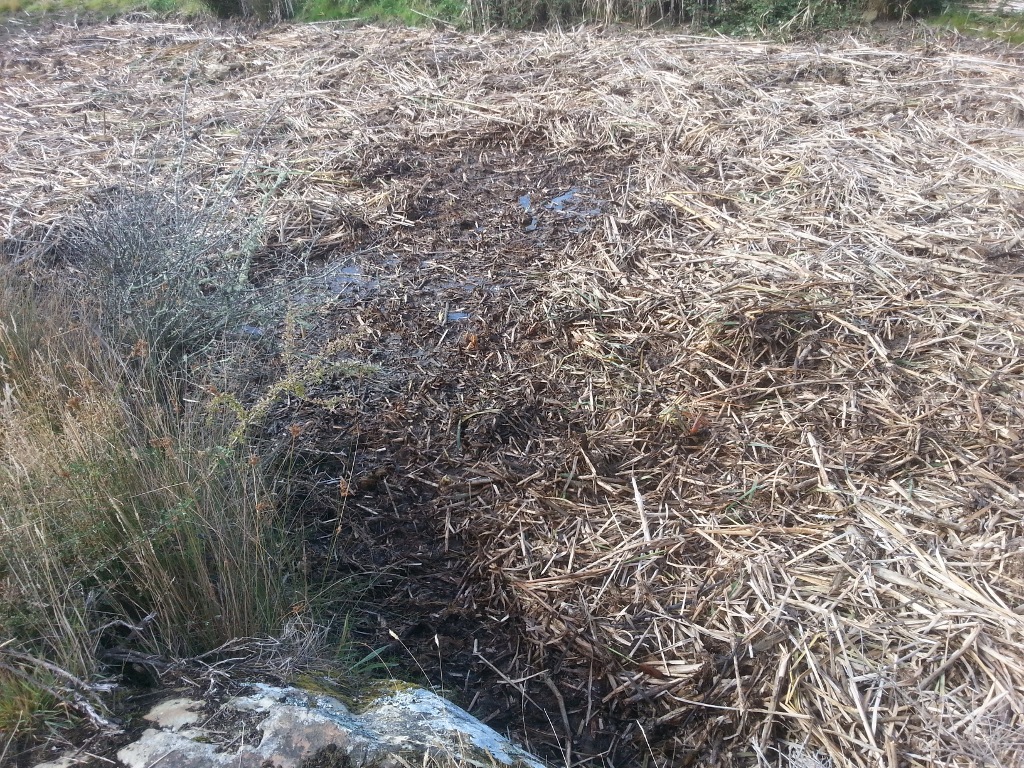 And after about another week:
And after about another week:
 There were frogs and spiders. I managed to photograph one of the frogs:
There were frogs and spiders. I managed to photograph one of the frogs:
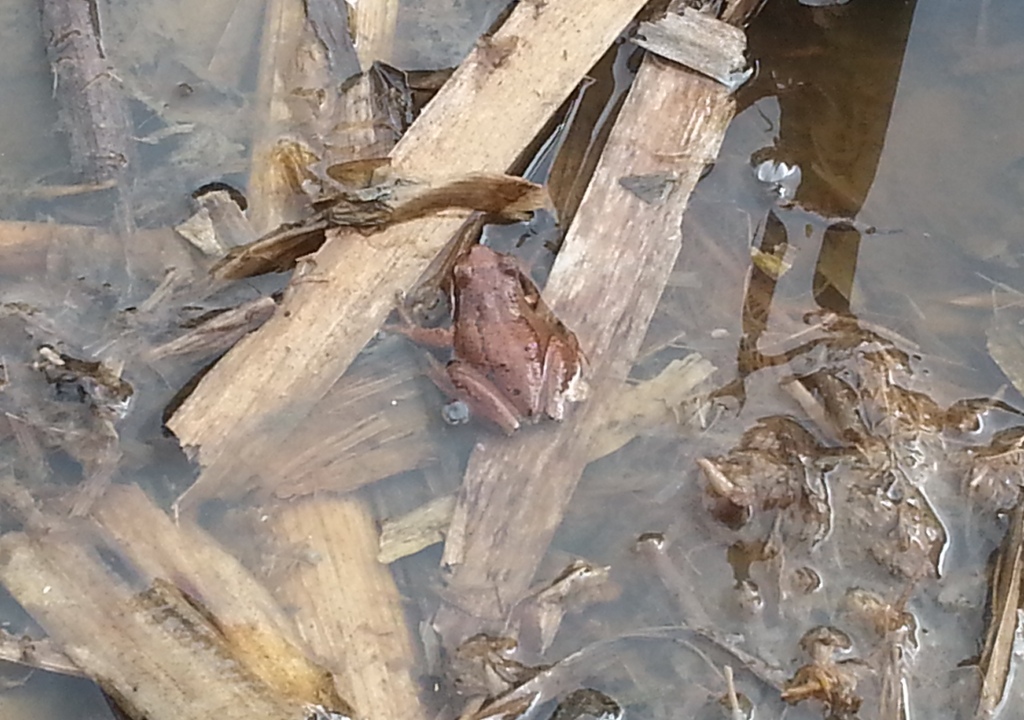 Finally, after seven weeks in total:
Finally, after seven weeks in total:

 It’s basically clear now; there’s a smattering of bulrushes attempting to regrow, but I have high hopes that it should at least be manageable now if we keep on top of it.
It’s basically clear now; there’s a smattering of bulrushes attempting to regrow, but I have high hopes that it should at least be manageable now if we keep on top of it.
It sounds pretty impressive to say this was a forty-nine day project, but it was actually “only” about twenty-five hours work. On the other hand, if I’d attempted to do the whole twenty-five hours back to back, I’d probably be dead now.
In other news, we have several piles of semi-dried bulrushes:
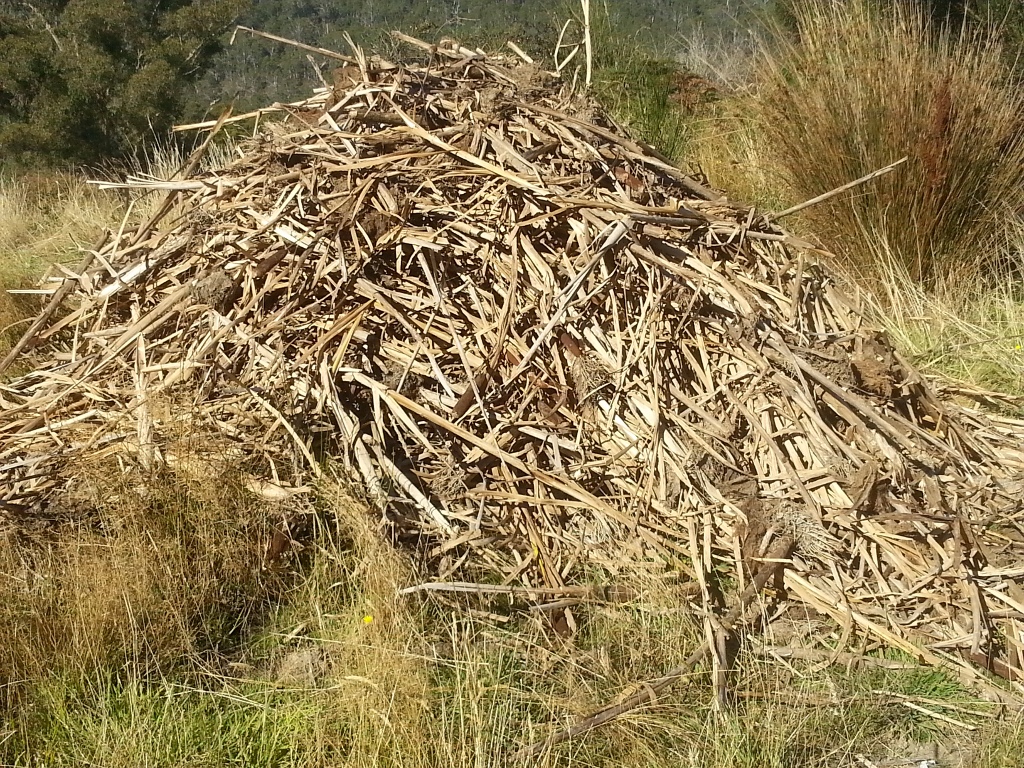 Possibly we should investigate basket weaving.
Possibly we should investigate basket weaving.
Down South Farm
Living Happy in Sunny Tasmania

Or a really fast bonfire 🙂
Go you!
Any sign of water?
I remembered that Barney told me about how the Maoris used to make bread form the pollen of the bulrushes, which they call Raupo. There is a full description of the process here and the recipe, which is on a different page on that site, is as follows.
Of course now we don’t have any bulrushes to try this recipe with. However I am confident they will return and we shall give it a go.
Nice post. Love the photos. I so understand why you started to make paths to avoid monotony. That’s an interesting looking frog. Do you know what species it is? I’ve tried looking on this website: http://www.parks.tas.gov.au/indeX.aspX?base=3060, which is a great Tassie frog resource, but I don’t think I can find your frog.
Alas, I have no idea what species the frog is, although I think he or she might have a friend who was living in the dreadfully clayey “road” that goes up past the house:
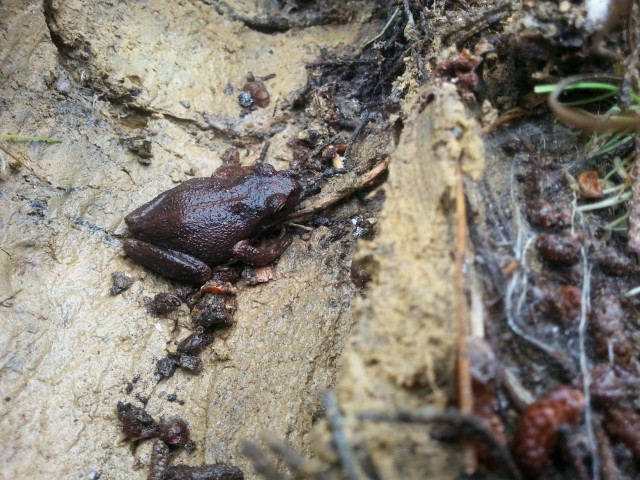
Amazing Tim, that’s really impressive! Shows what persistence and a strong back can produce. It will be interesting to see if the water gradually returns – love the little frog.
Nice post. We are also interested in the subject of leaky dams in Southern Tassie. In fact I’m interested in best practice dam management for hippies. I’d be interested to see any early basket weaving results 🙂 Please do post an update.
After a week of regular rain, there’s rather noticeable water in the dam again:
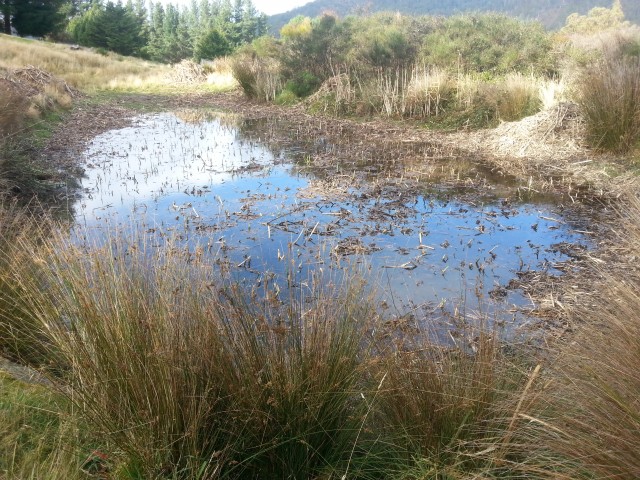
 . In my opinion the most interesting approach suggested is gley, which is “a layer of mashed, wet, green, sappy plant material sealed off from air”. Apparently you make a 15-23cm layer of this stuff over the base and sides of the dam, then cover completely with earth, cardboard, paper, plastic sheet, something, and it ferments anerobically to produce a bacterial slime which permanently seals soil/sand/gravel. Once the ferment is done, you fill the dam by pump or hose and remove the lining. Note: I have not tried this myself.
. In my opinion the most interesting approach suggested is gley, which is “a layer of mashed, wet, green, sappy plant material sealed off from air”. Apparently you make a 15-23cm layer of this stuff over the base and sides of the dam, then cover completely with earth, cardboard, paper, plastic sheet, something, and it ferments anerobically to produce a bacterial slime which permanently seals soil/sand/gravel. Once the ferment is done, you fill the dam by pump or hose and remove the lining. Note: I have not tried this myself.
It remains to be seen whether or not it’s actually leaking.
There’s some good information on repairing leaky dams in Bill Mollison’s Permaculture: A Designers Manual
No basket weaving yet, sorry 😉
Have you thought about a weeding wand and glyphosate?
Indeed I have. I thought “I will not be using glyphosate” 😉
ROTFLMBO
Yup